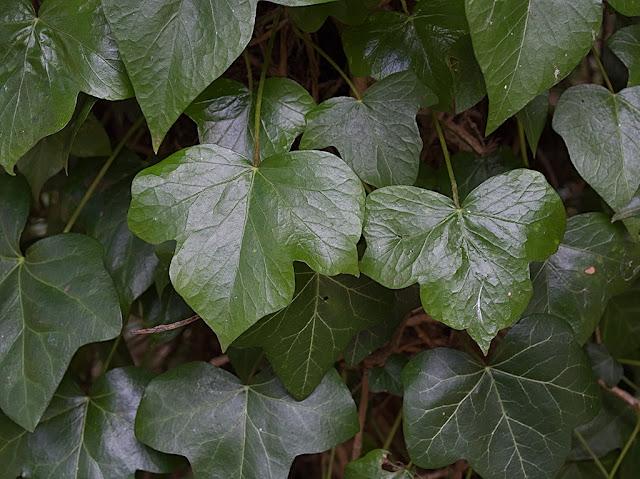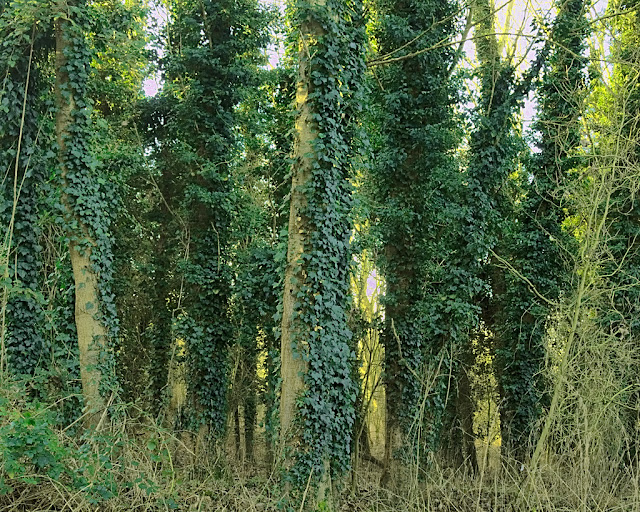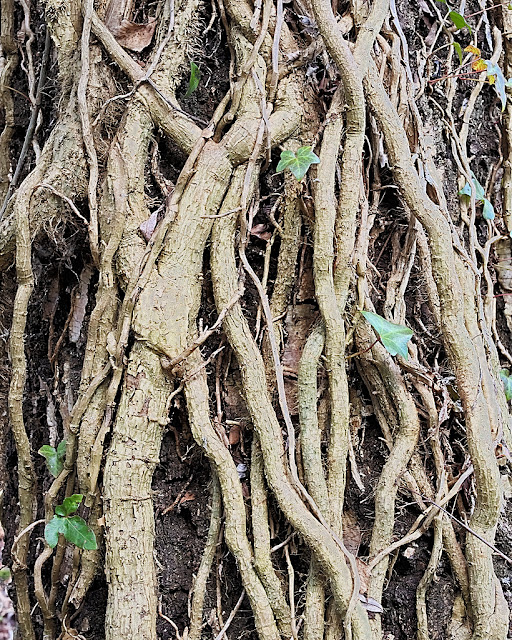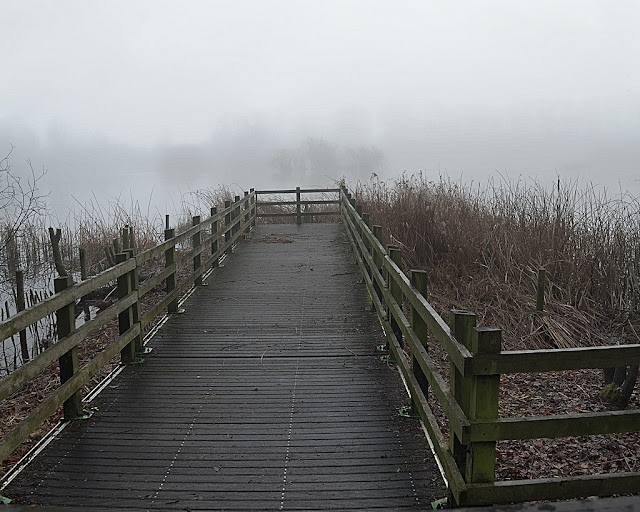 | |
| Jetty - 5 February 2017 The trees on the opposite bank are barely visible |
Fog is a thief of vision. It drains the landscape of colour and detail, leaving only the vaguest of details looming in the grey light. I notice that the dictionary definition of loom is to appear indistinct and in an enlarged form. Is this because the eye has nothing else to fix on in the monotonous gloom, and fills the space with anything it can discern?
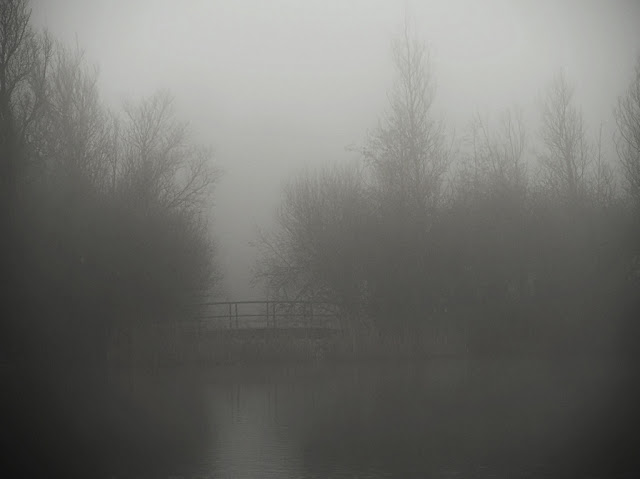 | ||
| View of a Bridge - 5 February 2017 One of the bridges between Deep Water and Dickerson's Pit |
The photograph above and the one below were both taken from the end of the jetty looking towards Deep Water.
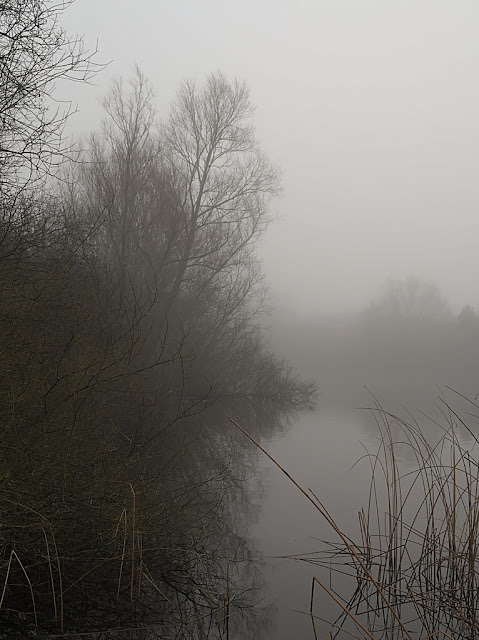 |
| Dickerson's Pit - 5 February 2017 |
In this second image, there is a hint of colour in the reeds in the foreground.
 |
| Birds in the Mist - 5 February 2017 Cormorant on island in middle of Dickerson's Pit |
Loom has connotations of menace. The featureless landscape becomes disorientating, and the silence, so often a feature of thick fog without any wind, can be disconcerting. The smallest sound is magnified - a bird's warning cry becomes a siren, as the mind invents what it can't detect.
What I hadn't appreciated before is how white objects appear so luminous in the gloom. In the middle of Dickerson's Pit, between the end of the jetty and the opposite shore, there are a couple of small islands. Even with some image intensification, this cormorant on a branch on one of these islands, is only just discernible. In contrast, the white gulls behind seem to positively glow.
 |
| Looking South Down Dickerson's Pit - 5 February 2017 |
Moving around, this photograph is a long view down Dickerson's Pit. Like the previous image, the swan and the white gulls stand out in the gloom.
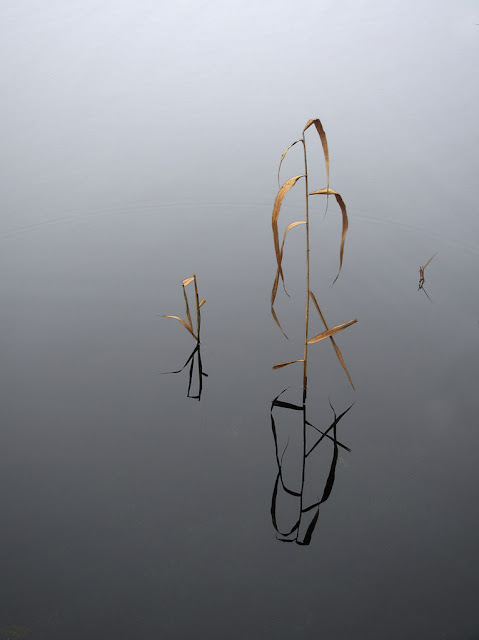 |
| Reeds - 5 February 2017 |
To an extent, fog is the photographer's friend: in blanketting out anything except the foreground, it can leave the subject of the picture isolated against a background of studio simplicity.
Next: Sprat-Weather
